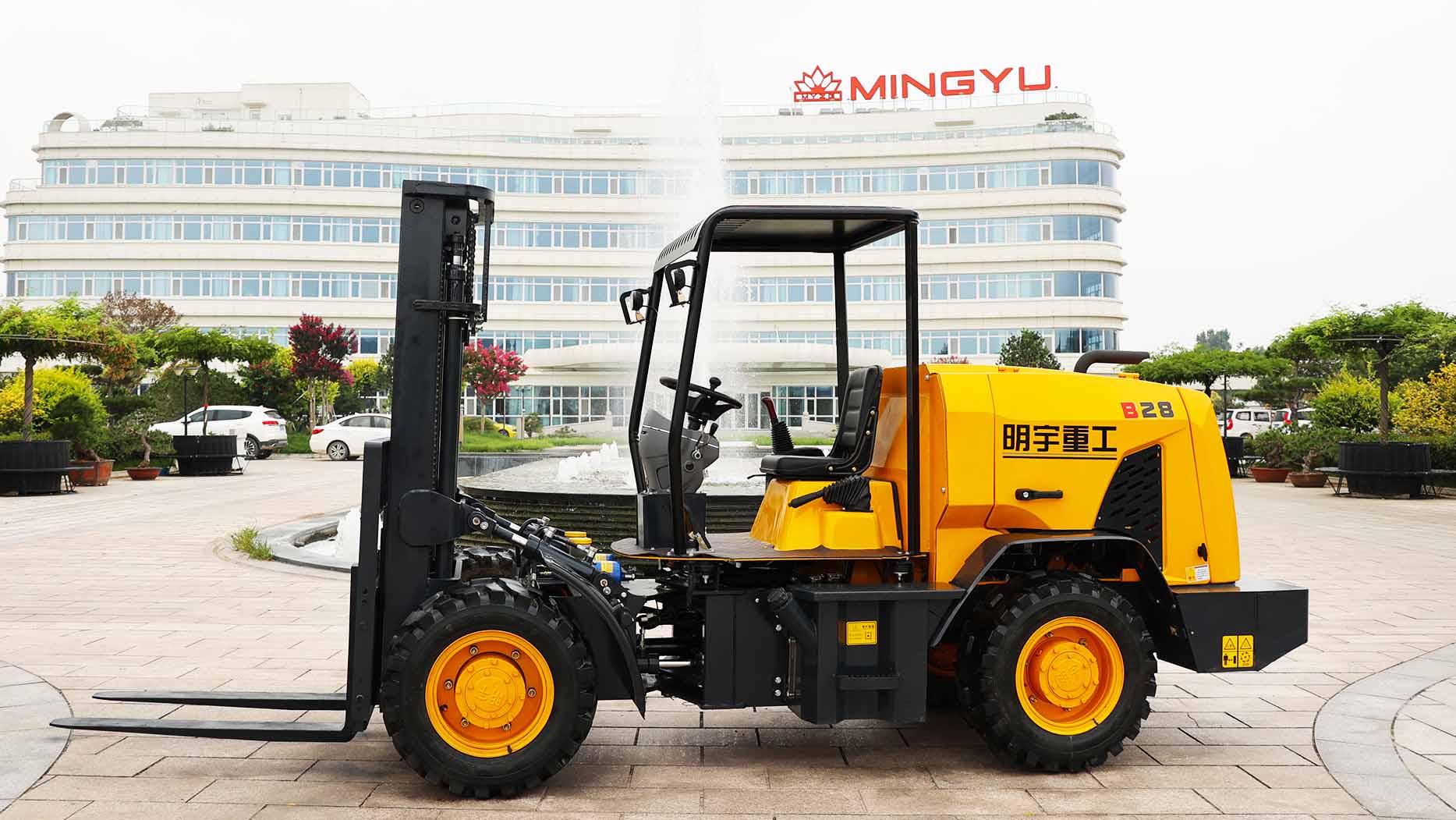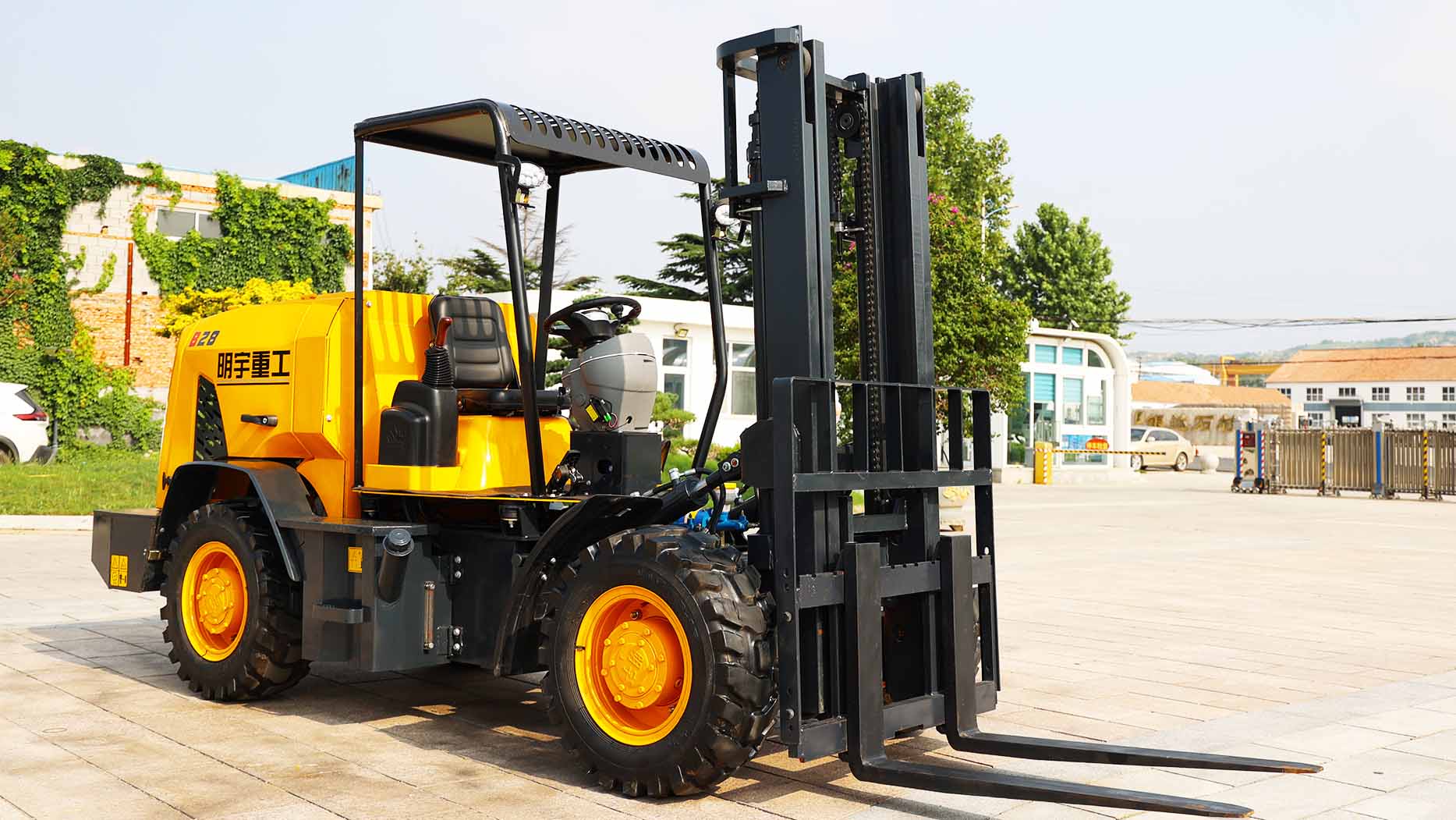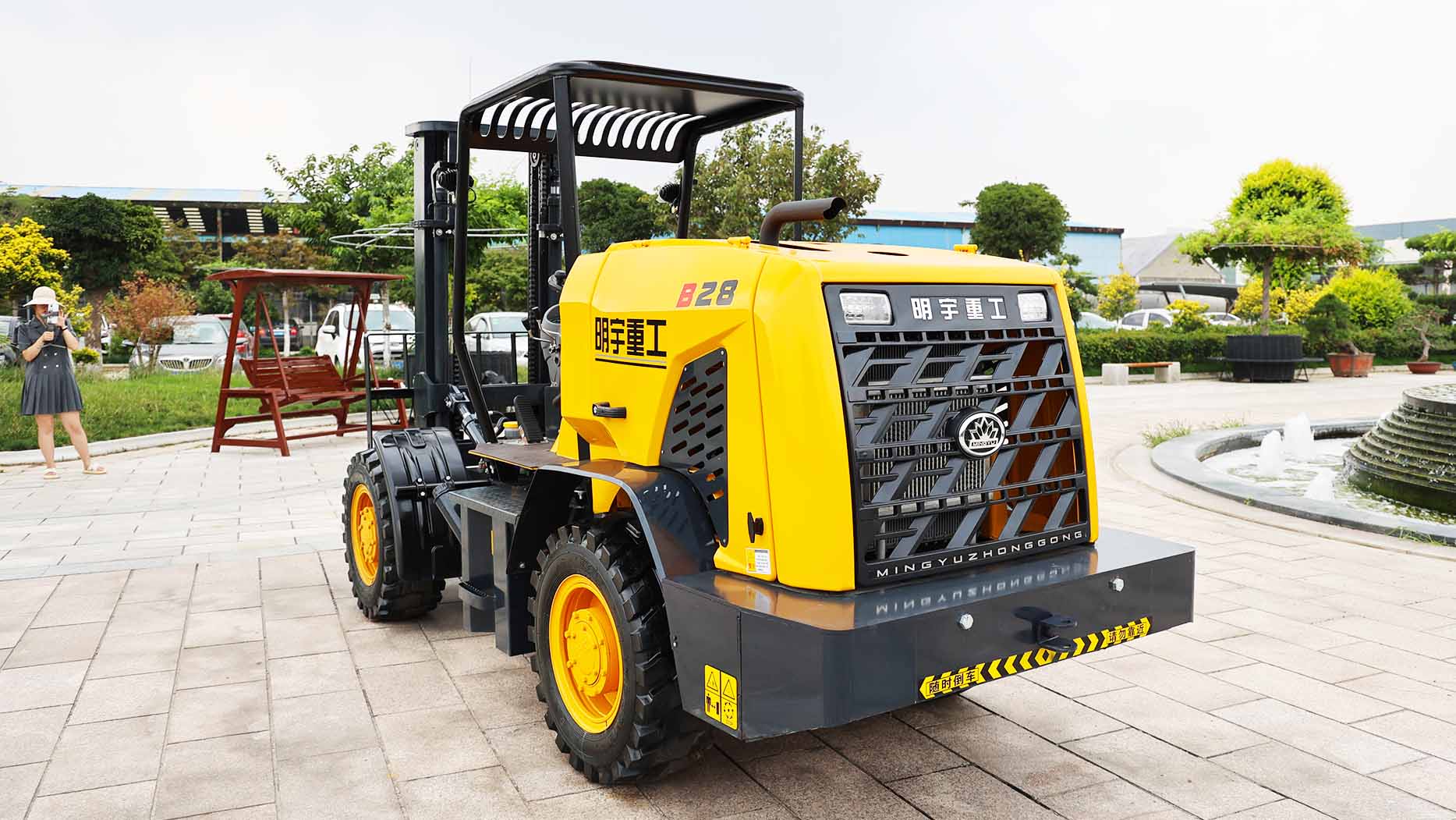Small rough terrain forklifts are indispensable tools for industries operating in challenging environments. Unlike their warehouse-bound counterparts, these robust machines are designed to tackle uneven terrain, muddy conditions, and outdoor applications. This article delves into the technical aspects of small rough terrain forklifts, exploring their design, functionality, applications, and maintenance considerations.
I. Defining Small Rough Terrain Forklifts:
Small rough terrain forklifts are characterized by their compact size, rugged construction, and specialized features that enable them to operate effectively on uneven surfaces. They typically have a lifting capacity ranging from 3,000 to 6,000 pounds, making them suitable for a wide range of tasks. Key features that distinguish them from standard forklifts include:
Large, Pneumatic Tires: These tires provide excellent traction and cushioning, enabling the forklift to traverse rough terrain without losing stability.
Four-Wheel Drive (4WD): 4WD ensures optimal traction and power distribution, allowing the forklift to navigate muddy, sandy, or steep inclines.
High Ground Clearance: Increased ground clearance prevents the undercarriage from getting damaged by obstacles.
Oscillating Rear Axle: This feature allows the rear wheels to move independently, maintaining contact with the ground and improving stability on uneven surfaces.
Heavy-Duty Construction: Rough terrain forklifts are built with robust frames and components to withstand the rigors of outdoor use.
II. Technical Design and Functionality:
The design of a small rough terrain forklift is tailored to its specific operating environment. Key technical aspects include:
Engine and Powertrain:
These forklifts are typically powered by diesel or gasoline engines, providing the necessary torque and power for demanding applications.
Hydrostatic transmissions are common, offering smooth and precise control.
The 4WD system usually includes a differential lock, which can be engaged to improve traction in extremely challenging conditions.
Hydraulic System:
A robust hydraulic system powers the lifting, tilting, and steering functions.
High-capacity pumps and cylinders ensure efficient and reliable operation.
Hydraulic oil coolers prevent overheating during prolonged use.
Mast and Carriage:
The mast is designed for strength and stability, with reinforced components to handle heavy loads.
The carriage provides a stable platform for the forks, allowing for precise load positioning.
Side-shift and fork-positioning attachments are often available to enhance versatility.
Steering and Braking:
Power steering ensures easy maneuverability, even in tight spaces.
Heavy-duty brakes provide reliable stopping power, even on steep inclines.
Some models feature all-wheel braking for enhanced safety.
Safety Features:
ROPS (Roll Over Protective Structure) and FOPS (Falling Object Protective Structure) are standard features, protecting the operator in case of accidents.
Seat belts, warning lights, and alarms are also included for added safety.
Some models contain grade sensing technology that can help prevent tip overs.
III. Applications of Small Rough Terrain Forklifts:
Small rough terrain forklifts are used in a variety of industries and applications, including:
Construction:
Moving building materials, such as lumber, bricks, and concrete blocks.
Loading and unloading trucks on construction sites.
Transporting equipment and tools around the job site.
Agriculture:
Handling hay bales, feed, and other agricultural products.
Loading and unloading trucks and trailers.
Working in orchards and vineyards.
Lumber and Forestry:
Moving logs and lumber in sawmills and logging operations.
Loading and unloading trucks and railcars.
Moving cut trees in the field.
Mining and Quarrying:
Transporting materials and equipment in mining and quarrying operations.
Working in challenging terrain and harsh conditions.
Landscaping and Grounds Maintenance:
Moving trees, shrubs, and other landscaping materials.
Loading and unloading trucks and trailers.
Working in parks and recreational areas.
Oil and Gas:
Transporting equipment and materials on oil and gas sites.
Working in remote and difficult to access locations.
IV. Maintenance Considerations:
Proper maintenance is essential to ensure the longevity and reliability of small rough terrain forklifts. Key maintenance considerations include:
Regular Inspections:
Perform daily pre-operation checks, including fluid levels, tire pressure, and visual inspections.
Conduct regular inspections of the hydraulic system, engine, and drivetrain.
Lubrication:
Grease all lubrication points regularly, including pivot points, bearings, and joints.
Use the correct type of lubricant for each application.
Fluid Changes:
Change engine oil, hydraulic fluid, and transmission fluid at the recommended intervals.
Use high-quality fluids that meet the manufacturer's specifications.
Tire Maintenance:
Check tire pressure regularly and inflate to the recommended pressure.
Inspect tires for cuts, punctures, and wear.
Rotate tires as needed to ensure even wear.
Filter Replacement:
Replace air filters, fuel filters, and hydraulic filters at the recommended intervals.
Clean or replace radiator and oil cooler cores.
Brake Maintenance:
Inspect brakes regularly for wear and damage.
Adjust brakes as needed to ensure proper operation.
Check brake fluid levels.
Hydraulic System Maintenance:
Check hydraulic hoses for leaks, cracks, and abrasions.
Inspect hydraulic cylinders for leaks and damage.
Check hydraulic fluid for contamination.
Engine Maintenance:
Check and adjust valve clearances as needed.
Inspect and clean or replace spark plugs (gasoline engines).
Inspect fuel injection systems (diesel engines).
Professional Inspections:
Schedule regular professional inspections by a qualified technician.
Professional inspections can identify potential problems that may be missed during routine maintenance.
V. Selecting the Right Small Rough Terrain Forklift:
When selecting a small rough terrain forklift, consider the following factors:
Lifting Capacity: Choose a forklift with a lifting capacity that meets your specific needs.
Lifting Height: Select a forklift with a mast that provides the required lifting height.
Terrain Conditions: Consider the terrain conditions where the forklift will be operating.
Fuel Type: Choose between diesel and gasoline engines based on fuel availability and operating costs.
Attachments: Determine if any attachments, such as side-shift or fork positioners, are required.
Manufacturer and Dealer Reputation: Choose a reputable manufacturer and dealer that provides excellent support and service.
Small rough terrain forklifts are essential tools for industries operating in challenging environments. By understanding their technical design, functionality, applications, and maintenance considerations, you can ensure that these robust machines operate efficiently and reliably, maximizing productivity and safety.
Post time:Feb.20.2025



